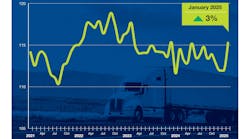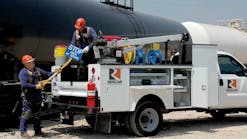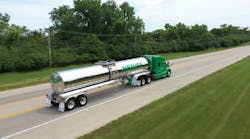Heniff Transportation Systems is preparing for a potential strike by two Class I railroad unions that could impact hazardous materials shipments.
The Illinois-based tank truck carrier says it already has initiated contingency discussions with key customers to best manage the anticipated fallout from a rail union strike, which could commence after midnight Friday, according to reports. And, Heniff points out, railroads already have taken preliminary actions to halt the transportation of hazardous and other bulk shipments to avoid materials being unattended or unsecured in case of a work stoppage, negatively impacting the supply chain for liquid bulk chemicals and food.
“Supply chain challenges are certainly not new, but these recent actions by the railroads will make it extremely difficult for our customers all across North America,” said Bob Heniff, Heniff founder and CEO. “We’ve been working closely with them to explore how we can leverage our unique operating network and offer multimodal solutions to keep their supply chains open.”
Unlike most trucking segments, tank trucks don’t compete with railroads, instead offering “complementary,” final-mile services to end users. So a short-term switch from rail to tank trucks not only would be costly and disruptive, it also likely would fail due to existing capacity constraints, Heniff said. According to reports, railroads handle approximately 55,000 carloads of chemicals each week and another 19,000 carloads of petroleum products. Given that a rail tank car typically holds about four times the capacity of a tank truck trailer, that would equate to nearly 300,000 additional tank truck loads.
The story is similar for food products, as railroads currently move about 31,000 carloads per week.
“Whether they strike or not, the railroads’ preliminary actions to halt hazmat and food products will be extremely disruptive for our company and its many customers,” said Wes Stone, president and chief commercial officer of Heniff. “Together with our top customers, we’ll attempt to deploy every service element within our expanded network to mitigate strike-related disruption, including dedicated capacity, ISO service, transloading, and brokerage.”
The potential railroad strike is set to go into effect if labor and management cannot break an impasse over issues such as sick time and penalties for absenteeism. It would be the first such strike since 1991. However, a strike is preventable through congressional action, which is what stopped the 1991 strike after one day, and a similar walkout at CSX in 1992 that ended after two days.









